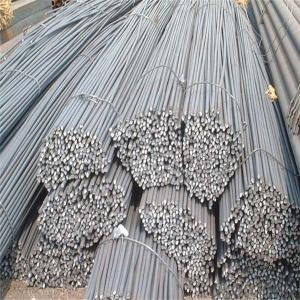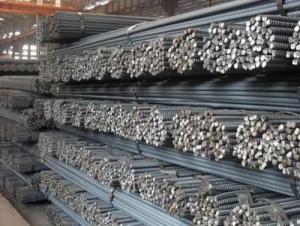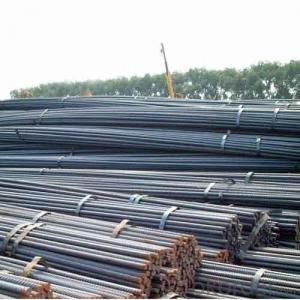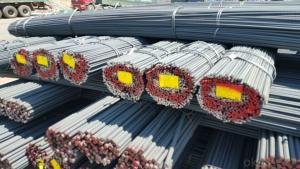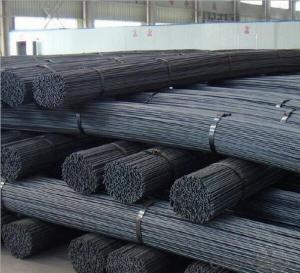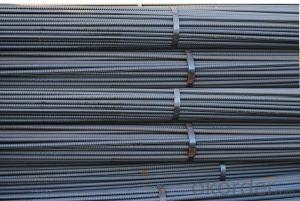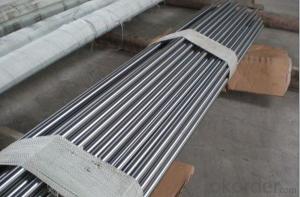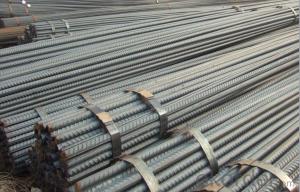HRB400 Deformed Steel Rebar hot sale for constraction
- Loading Port:
- Tianjin
- Payment Terms:
- TT OR LC
- Min Order Qty:
- 100 m.t.
- Supply Capability:
- 18000 m.t./month
OKorder Service Pledge
OKorder Financial Service
You Might Also Like
Specification
Reinforcing bars, steel rebar is metal bars often used in construction for pouring concrete or supporting walls
and columns. The rebar can be smooth, though they are frequently manufactured with deformations that create
greater texture to which concrete can adhere, creating a stronger bond that helps prevent cracking of concrete.
These deformations do not create weaknesses in the rebar, and when rebar is measured to determine its diameter,
it is typically measured at the narrowest point. Strength grades indicate the amount of pressure the steel rebar can
withstand, and grade and diameter are typically presented in both imperial and metric units
Our Advantage: High quality steel products from 1 class mills in China
Reasonable price
Professionalism of the products
On-time delivery
Complete documents and certificates
Sincere service to meet our clients' requirements
Product Description :
Chemical composition (%): | Steel | C | Si | Mn | P | S | Ceq | ||||
HRB335 |
0.25 |
0.80 |
1.60 |
0.045 |
0.045 | 0.52 | |||||
HRB400 | 0.54 | ||||||||||
HRB500 | 0.55 | ||||||||||
Mechanical properties | Steel | Rel/ MPa | Rm/ MPa | A/ % | Agt/ % | ||||||
≥ | |||||||||||
HRB335 | 335 | 455 | 17 |
7.5 | |||||||
HRB400 | 400 | 540 | 16 | ||||||||
HRB500 | 500 | 630 | 15 | ||||||||
Package: | Standard export packing or as customer's request | ||||||||||
Application: | Construction, building, bridge, road. ect | ||||||||||
Payment terms | 1).100% irrevocable L/C at sight. | ||||||||||
Delivery time | 15-30 days after receipt of L/C or deposit by T/T | ||||||||||

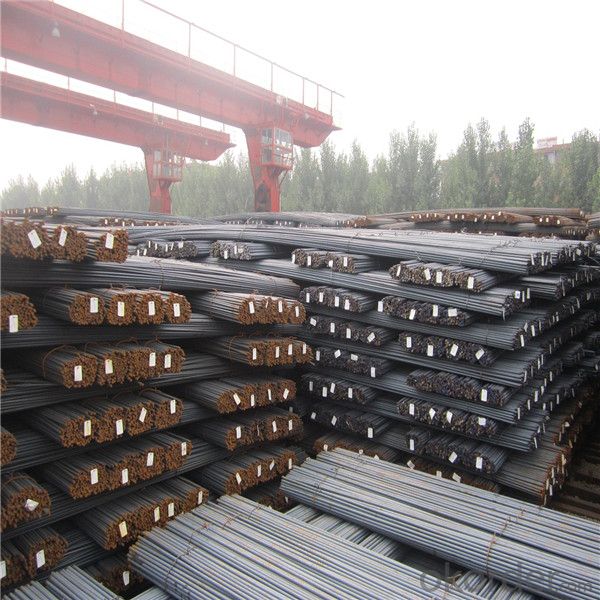
Packing:
In bundles, each bundle weight 3.5 tons. Load by container or by bulk verssel.
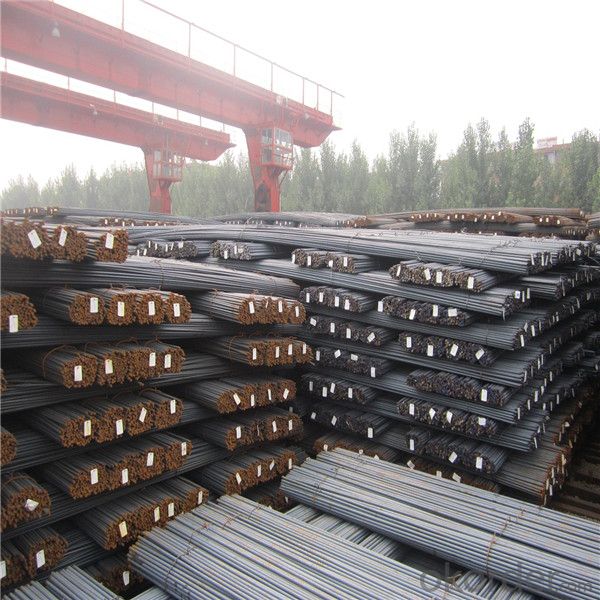
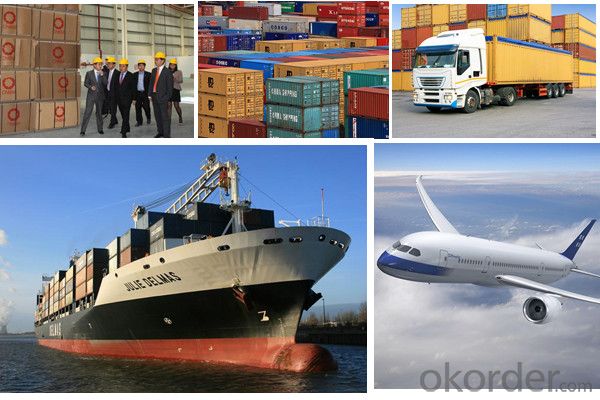
Our service
(1) We cooperate with famous factories with advanced equipment and well trained workers.
(2) We can provide factory price with trading company service.
(3) We continuously work on the improvement of our processes, guaranteeing consistently high standards
of quality to keep none compensation.
(4) We guarantee 24 hours response and 48 hours solution providing service.
(5) We accept small order quantity before formal cooperation.
(6) We deliver the agreed quality at the agreed time, reacting to changes in customer wishes in a flexible way.
(7) Due to our volume and selling power, we have excellent freight rates with shipping lines.
(8) We strive to always be fair and honest in our dealings with customers.
(9) We strive to work together with customers to achieve much more than we can achieve alone.
(10) Through our passion and commitment we aim to be a market leader in all our key markets. To maintain
our position as market leader we must continue to add value in all that we do.
FAQ:
1.Q: What's your MOQ(minimum order quantity)?
A: One full container, mixed acceptable .
2. Q: What's your packing methods?
A: Packed in bundle or bulk ..
3. Q: How can I buy CNBM products in my country?
A:Please send us an inquiry or email ,we will reply to you if there is distributor in your country
4. Q: Can we visit your factory?
A: Warmly welcome. Once we have your schedule, we will arrange the professional sales team to follow up your case.
5. Q: How long does it take to get the product if i place an order?
A:With the process of your requirements,we will pack and deliver in 3-7 days. If it is by sea shipment,it will take 15-45 days depending on different locations
- Q: How do steel rebars affect the overall constructability of a project?
- Steel rebars have a significant impact on the overall constructability of a project. These reinforcing bars, commonly known as rebars, play a crucial role in enhancing the strength, durability, and stability of concrete structures. They are instrumental in mitigating the tensile forces that concrete alone cannot withstand, thereby increasing the overall load-bearing capacity of the structure. Firstly, steel rebars simplify the construction process by providing a framework for pouring and shaping concrete. They act as a skeletal structure that holds the concrete in place during the curing process, ensuring that it sets properly and takes the desired shape. This contributes to the overall efficiency of construction projects, as it allows for faster concrete placement and reduces the risk of structural deformities. Moreover, rebars enhance the structural integrity of the project. By reinforcing the concrete, they improve its ability to resist cracking, bending, and breaking under various loads and environmental conditions. This increased strength and resilience make the structure more durable and reduce the need for frequent repairs or maintenance, ultimately saving time and costs in the long run. In addition to strength and durability, steel rebars also enhance the constructability of a project by enabling flexibility in design. With rebars, architects and engineers have the freedom to create complex and innovative structures, such as high-rise buildings, bridges, and tunnels, that require high load-bearing capacities. The versatility of rebars allows for the construction of structures with unique shapes, curves, and spans, expanding the possibilities of architectural design. Furthermore, steel rebars facilitate constructability by enabling the construction of large-scale projects. The use of rebars allows for the creation of reinforced concrete elements, such as columns, beams, and slabs, which can support heavy loads and distribute them evenly throughout the structure. This capability is particularly crucial for projects that require significant weight-bearing capacity, such as industrial buildings or infrastructure projects. Overall, steel rebars have a profound impact on the constructability of a project. They simplify the construction process, enhance structural integrity, enable flexibility in design, and facilitate the construction of large-scale projects. By incorporating rebars into concrete structures, construction professionals can ensure that their projects are stronger, more durable, and better equipped to withstand various loads and environmental conditions.
- Q: What are the common mistakes to avoid while using steel rebars?
- When using steel rebars, there are several common mistakes that should be avoided to ensure the structural integrity and safety of the construction project. Some of these mistakes include: 1. Insufficient cover: Failing to provide enough concrete cover over the rebars can lead to corrosion and reduced strength. It is important to follow the design specifications and ensure the required cover is maintained throughout the construction process. 2. Improper placement: Incorrectly placing the rebars can result in weak areas within the structure. It is crucial to follow the approved drawings and ensure proper spacing, alignment, and lap lengths are maintained. 3. Inadequate anchoring: Insufficient anchoring of the rebars can lead to inadequate load transfer and structural failure. It is essential to properly anchor the rebars by providing adequate hooks or bends at the ends and using appropriate tie wire or mechanical connectors. 4. Poor welding practices: If welding is required to connect rebars, it is essential to follow proper welding procedures and ensure high-quality welds. Inadequate or improper welding can weaken the rebars and compromise the structural strength. 5. Neglecting corrosion protection: Steel rebars are susceptible to corrosion, especially in humid or marine environments. Neglecting to provide proper corrosion protection, such as epoxy coating or corrosion inhibitors, can result in premature deterioration and reduced structural performance. 6. Overlapping rebars incorrectly: Overlapping rebars is necessary to ensure the transfer of forces between adjacent sections. However, overlapping them incorrectly by either insufficient length or improper alignment can compromise the structural integrity. 7. Lack of inspection and quality control: Failing to conduct regular inspections and quality control checks during the construction process can lead to unnoticed mistakes or deviations from the design. It is crucial to have qualified personnel inspect the rebars and ensure compliance with the specifications and industry standards. By avoiding these common mistakes and adhering to best practices, the structural integrity and safety of the construction project can be upheld. It is essential to consult with structural engineers, follow approved drawings and specifications, and ensure proper installation and quality control to prevent any potential issues.
- Q: How do steel rebars affect the overall crack control of concrete?
- The incorporation of steel rebars into concrete structures is crucial for crack control. Steel rebars significantly improve the otherwise low tensile strength of concrete. Tensile forces, such as drying shrinkage, temperature changes, or applied loads, tend to cause cracks in concrete. However, the presence of steel rebars helps mitigate and control these cracks. Rebars reinforce the concrete and provide additional strength. They resist tensile forces and prevent easy cracking of the concrete. When reinforced concrete is subjected to tensile forces, the rebars bear a significant portion of the load, reducing the stress on the concrete and minimizing crack formation. The bond between the steel rebars and the concrete is essential for crack control. This bond ensures effective transfer of tensile forces to the concrete, enhancing its overall crack resistance. Additionally, the bond helps distribute applied loads evenly, reducing the risk of localized cracking. Steel rebars also have the ability to control crack widths in concrete. By specifying the appropriate diameter, spacing, and arrangement of the rebars, engineers can influence crack widths to meet design requirements. The rebars act as barriers, limiting the width of cracks and maintaining the structural integrity of the concrete. In conclusion, steel rebars have a positive impact on crack control in concrete. They enhance the tensile strength, resist tensile forces, distribute loads, and limit crack widths. Incorporating steel rebars in concrete ensures durability and longevity of structures by effectively controlling crack formation and minimizing their negative consequences.
- Q: Can steel rebars be used in precast or prestressed concrete?
- Yes, steel rebars can be used in precast or prestressed concrete. Steel rebars, also known as reinforcing bars, are commonly used in precast and prestressed concrete structures to provide additional strength and durability. The rebars are typically placed within the concrete matrix to withstand tensile forces that may be encountered during the service life of the structure. The use of steel rebars helps to enhance the structural integrity and load-bearing capacity of the precast or prestressed concrete components, making them capable of withstanding higher loads and minimizing the risk of failure. Additionally, steel rebars also facilitate the transfer of stresses between different parts of the precast or prestressed concrete elements, ensuring a more uniform distribution of forces and enhancing the overall performance of the structure. Therefore, steel rebars are commonly used in precast and prestressed concrete construction to improve the structural characteristics and longevity of the finished product.
- Q: What is the average lifespan of steel rebars in a structure?
- The average lifespan of steel rebars in a structure can vary depending on various factors such as the quality of the steel, environmental conditions, and maintenance practices. However, under normal circumstances and with proper maintenance, steel rebars can have a lifespan of around 50 to 100 years.
- Q: How do steel rebars provide reinforcement in concrete structures?
- Steel rebars provide reinforcement in concrete structures by adding tensile strength to the concrete. Concrete is strong in compression but weak in tension, so the rebars are embedded within the concrete to counteract the tensile forces. The rebars act as a framework, holding the concrete together and preventing it from cracking or breaking under tension. This combination of concrete and steel rebars creates a reinforced concrete structure that is stronger and more durable than concrete alone.
- Q: What are the common types of steel rebars used in bridge construction?
- In bridge construction, there are several common types of steel rebars that are widely used. These include: 1. Carbon Steel Rebars: These are the most commonly used rebars in bridge construction. They are made of carbon steel and have high strength and durability. Carbon steel rebars are known for their excellent tensile strength and ability to withstand heavy loads. 2. Stainless Steel Rebars: Stainless steel rebars are corrosion-resistant and have a high resistance to environmental factors such as moisture and chemicals. They are commonly used in bridge construction projects located in coastal areas or environments with high levels of pollution. 3. Epoxy-Coated Rebars: Epoxy-coated rebars are carbon steel rebars that are coated with a layer of epoxy to provide corrosion protection. This type of rebar is commonly used in bridges exposed to harsh environmental conditions, such as bridges located in coastal areas or those subjected to de-icing salts. 4. Galvanized Rebars: Galvanized rebars are carbon steel rebars that have been coated with a layer of zinc. This coating provides excellent corrosion resistance, making galvanized rebars suitable for use in bridge construction projects located in corrosive environments. 5. Fiberglass Rebars: Fiberglass rebars are made of glass fibers embedded in a polymer resin matrix. This type of rebar is lightweight, corrosion-resistant, and has a high strength-to-weight ratio. Fiberglass rebars are commonly used in bridge construction projects where weight reduction is a key consideration. Each type of rebar has its advantages and is selected based on the specific requirements of the bridge construction project, including factors such as the environmental conditions, load-bearing capabilities, and durability requirements.
- Q: How are steel rebars used in retaining walls?
- Steel rebars are used in retaining walls to provide additional strength and reinforcement. These rebars, which are typically placed horizontally and vertically within the wall, help to counteract the lateral forces and prevent the wall from collapsing or shifting. They enhance the structural integrity of the retaining wall, allowing it to withstand the pressure exerted by the soil or other materials being retained.
- Q: What are the different methods of cutting and bending steel rebars on-site?
- There are several different methods for cutting and bending steel rebars on-site. Some common methods include using a rebar cutter or shear for cutting the rebars, and a rebar bender or manual bending tool for bending them. Other techniques may involve using oxy-fuel torches, angle grinders, or hydraulic tools for cutting, and hydraulic or mechanical benders for bending the rebars. The choice of method depends on the specific requirements, equipment availability, and the expertise of the workers.
Send your message to us
HRB400 Deformed Steel Rebar hot sale for constraction
- Loading Port:
- Tianjin
- Payment Terms:
- TT OR LC
- Min Order Qty:
- 100 m.t.
- Supply Capability:
- 18000 m.t./month
OKorder Service Pledge
OKorder Financial Service
Similar products
Hot products
Hot Searches
Related keywords
